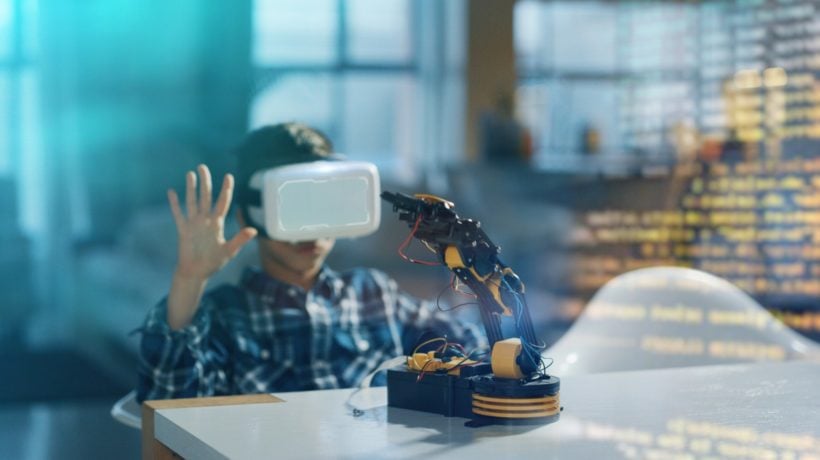Discover Australia's Finest
Explore the latest news, insights, and stories from down under.
Seeing the Future: Why Augmented Reality is the Next Big Thing
Discover how augmented reality is reshaping our world and why it’s set to revolutionize every industry. Don’t miss the future!
Exploring the Impact of Augmented Reality on Daily Life
Augmented Reality (AR) technology is increasingly permeating daily life, fundamentally altering how we interact with our environment and information. This innovative technology superimposes digital content onto the real world, enhancing our perception and engagement with various activities. From shopping experiences that allow consumers to visualize products in their own homes to educational tools that bring textbook illustrations to life, AR is proving to be a game-changer across diverse sectors. It enables users to experience a seamless blend of physical and digital worlds, reshaping everyday tasks and routines.
Moreover, the impact of Augmented Reality extends to areas such as gaming, where players can participate in immersive experiences that augment reality with interactive gameplay. For instance, popular games like Pokémon GO have demonstrated how AR can encourage outdoor activity and social interaction. In the workplace, AR applications assist in training and collaboration, facilitating remote guidance through real-time, hands-on experiences. As AR technology continues to advance, its potential to enhance our daily lives is boundless, suggesting a future where our interactions with the world around us are enriched beyond imagination.

How Augmented Reality is Revolutionizing Education and Training
Augmented Reality (AR) is transforming the landscape of education and training by providing immersive learning experiences that engage students in unprecedented ways. With AR technology, learners can interact with 3D models and simulations, enhancing their understanding of complex subjects. For instance, science students can visualize molecular structures or dissect virtual organisms, while history classes can bring ancient civilizations to life through interactive timelines and archaeological sites. This level of engagement increases retention rates and fosters a deeper connection to the material being learned.
Moreover, AR in training programs equips professionals with hands-on experience without the risks associated with real-world training. Industries such as healthcare, aviation, and manufacturing have begun utilizing AR for skill development. Trainees can practice procedures in a safe environment, receiving immediate feedback and guidance through augmented overlays. As organizations adopt AR solutions, they not only enhance the effectiveness of their training but also reduce costs and improve safety outcomes. Ultimately, the integration of augmented reality into education and training represents a significant advancement, setting the stage for future innovations in learning technologies.
What are the Key Applications of Augmented Reality in Business?
Augmented Reality (AR) has emerged as a transformative technology in various industries, enhancing operations and customer experiences. One of the key applications of AR in business is in retail and e-commerce. Retailers can utilize AR to create immersive shopping experiences, allowing customers to visualize products in their own space before making a purchase. For instance, stores like IKEA have developed AR apps that enable users to see how furniture will look in their home environment, significantly boosting customer satisfaction and reducing return rates.
Another significant application of AR is in training and education. Businesses are increasingly adopting AR solutions for training employees, providing interactive and engaging learning experiences. For example, industries such as manufacturing and healthcare benefit from AR simulations that allow trainees to practice skills in a safe, controlled environment. This not only enhances knowledge retention but also accelerates the training process, which in turn leads to increased productivity and efficiency in the workplace.